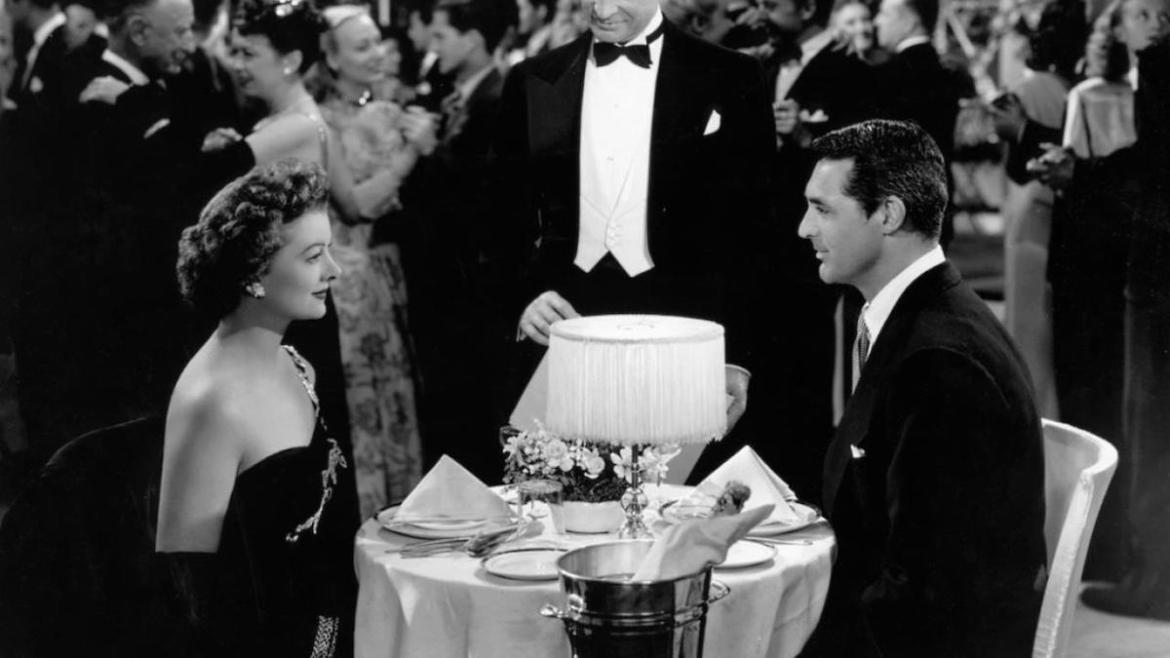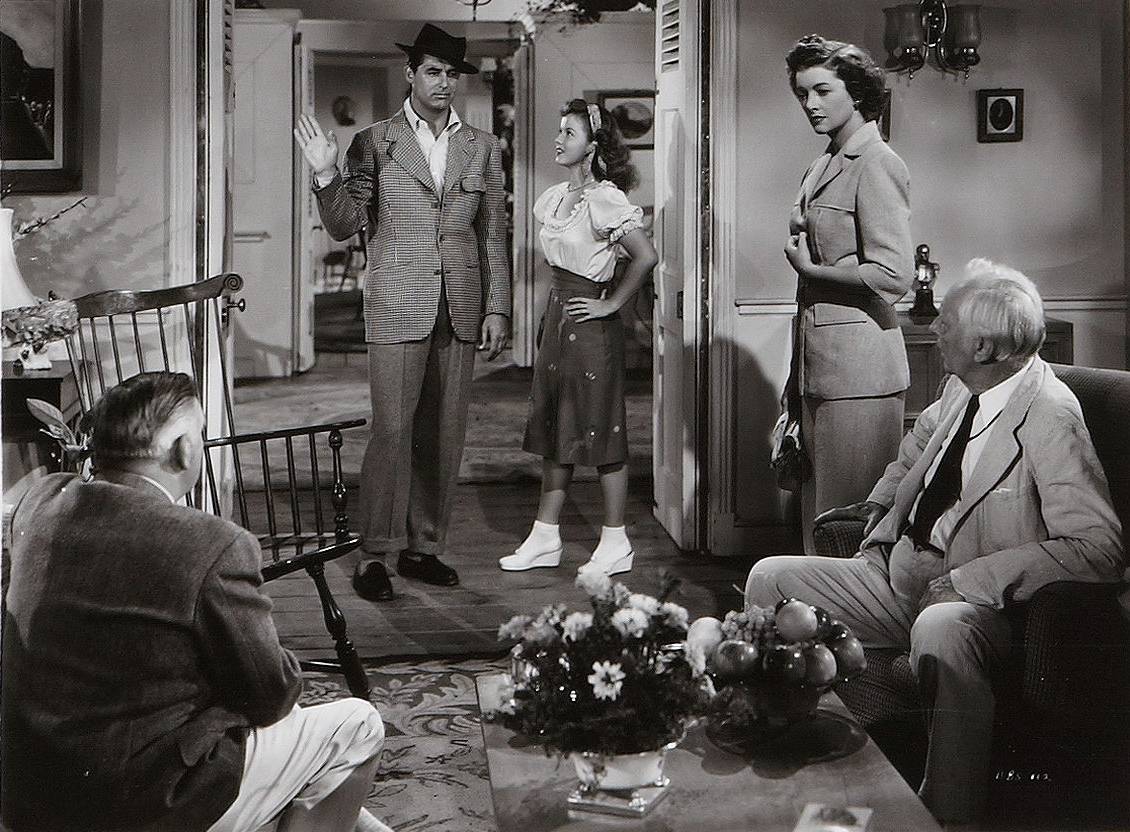In the contemporary age we live in, the plot of The Bachelor and the Bobby Soxer is one which is apt to instill definite uncomfortable feelings in some people. The name, the story and the plot itself all sound more than a bit dated. However, when looked at through a historical perspective, the film emerges as a fascinating exploration of post- World War II cultural transition during a complicated periodinhistory.
The Bachelor and the Bobby Soxer follows the story of rich playboy Dick Nugent (Cary Grant). After narrowly escaping some legal trouble, he falls into the sights of teenager Susan Turner (Shirley Temple). When the young girl inadvertently gets him into trouble, her sister Judge Margret (Myrna Loy) decides the best way to help her sister get over him is for the two to date. Irving Reid directed the film from a screenplay by Sidney Sheldon.
The film is particularly fascinating in its depiction of the rise of teenage culture which began during this period. While “teenagers” always found something to enjoy from Caruso to Rudy Vallee, the rise in mass media and popular culture during the 1940s brought a new sense of the joys of these formative years. From bobby socks to swing dancing and Frank Sinatra, the population of the United States was growing ever younger and the demographic quickly stepped into the focal point of public consciousness.
While the story approaches the question of teenagers through a fairly comedic (and mainstream) Hollywood lens, the movie brings an earnestness that other films of the period somewhat lack. A big part of this stems from the strength of Shirley Temple’s performance.
By this point, the young actress was already a fifteen year veteran of the screen, having debuted in 1932. By the release of The Bachelor and the Bobby Soxer in 1947, the actress found herself pushing 19 years old, and quickly entering a new (and decidedly tricky) stage in her career. The young girl quickly became a household name largely by the age of six and she’d grown up in front of America’s eyes during the turbulent Great Depression . Not only was Temple likable and relatable, but she was still a teenager at this point. In an industry which not afraid to cast thirty year olds as teenagers in an era when drive-in exploitation features were beginning to take off, the choice to cast Shirley Temple brings an air of realism to the depiction of teenagers. They might use some funny language (“Mellow Greetings, Yookie Dookie!”), but the bobby soxers were coming to prominence and teens were here to stay.

Acting opposite Shirley Temple is the equally important Myrna Loy. Film fans will recognize the actress from her legendary work in the 1930s, opposite actors like William Powell. She established herself among the fiesty leading ladies of the period like Katherine Hepburn, Bette Davis and Joan Crawford. As a leading lady, Loy was (largely) independent, active and a complete and utter equal when placed next to her male co-stars.
In her take on Margaret Turner, Loy once again injects her trademark wit and intelligence into the character. Interestingly, as we’re dropped into the film the narrative plays a little coy on the identity of “The Judge” as the family’s maid Bessie (Lillian Randolph) wanders around, waking the two sisters up for the morning. Loy’s face is quite literally obscured by a lamp as she lays in bed. While lady judges are a bit more commonplace in contemporary culture, this is 1947 we’re discussing. The casting of Myrna Loy as the judge and not the judge’s pretty, but spinster older daughter is tremendously important. This continues the development of the star persona Loy established for herself in the early part of her career. She’s likable, has her life together, and quite honestly doesn’t need a man. However, this doesn’t stop the men in her life (Ray Collins) from trying to hook her up– it is 1947 after all.

It’s easy to look past Rudy Vallee in his casting as “Assistant District Attorney” Tommy Chamberlain. The much loved singer from the 1920s started shifting towards feature films in the 1930s. By this period, he found himself well into the awkward, former teen idol phase that all performers dread. Rudy Vallee was the Frank Sinatra for the Greatest Generation. The casting decision seems like a calculated one. Vallee started appearing in movies as early as 1929, but this is one of the earliest uses of him in a rare non-musical. While he’s very much a “straight” man, the actor absolutely shines in the very subtle humor of his character. Vallee really comes into his own in the third act, particularly as the characters and stories come to a head inside a night club. His stuffed shirt indignation absolutely helps to sell the comedy, bringing a selfless performance for Grant and Loy to play off.
In our contemporary culture, The Bachelor and the Bobby Soxer brings a bit of a nervous chuckle. While the Sidney Sheldon script is very reminiscent of its period, the classic comedy is vitally important when viewing the film through a transitional, historic lens. Fans of classic cinema should definitely ensure this one is on their list.



